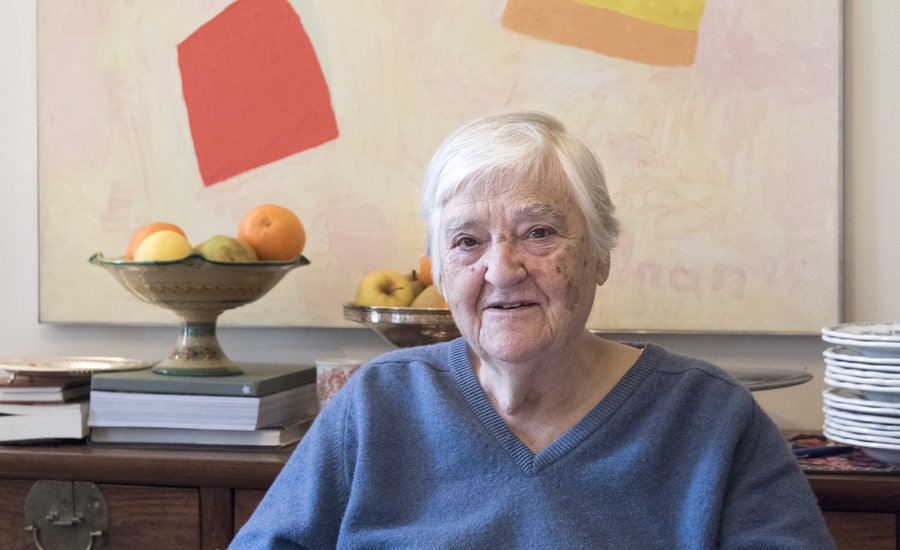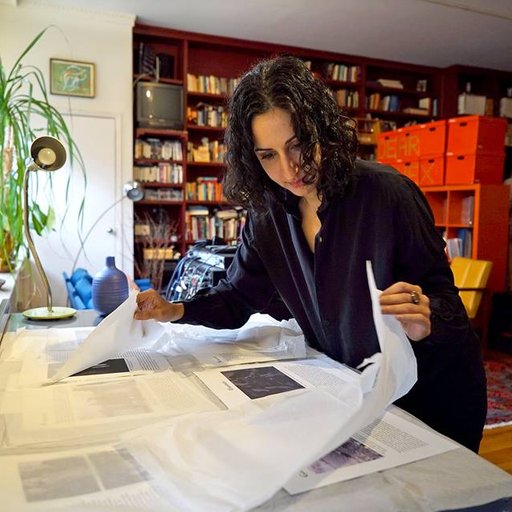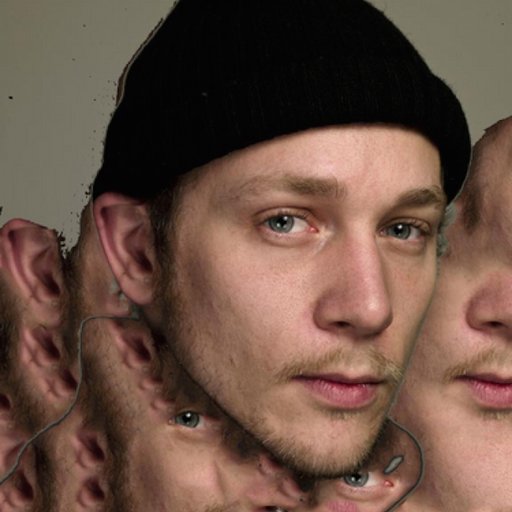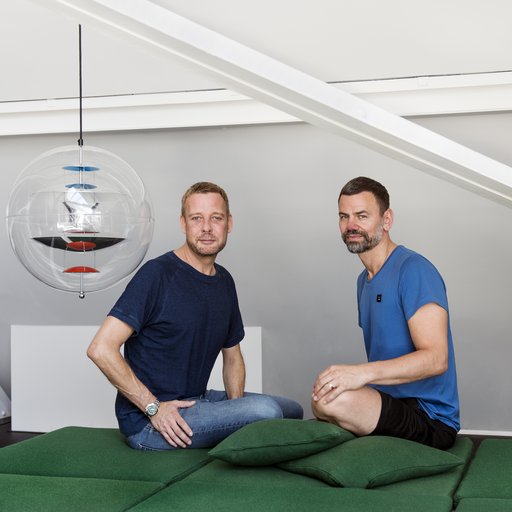Writing about Etel Adnan’s paintings all but necessitates delving into her biography; with 91 years behind her there’s a lot of ground to cover, and the Lebanese painter, poet, and journalist has herself covered a lot of ground.
A born cosmopolitan, Adnan was raised in Beirut by a Syrian father and Greek mother and was educated in French convent schools before leaving home to continue her education in Paris and the United States. She eventually found a home at the Dominican University of California, where she taught the philosophy of art for 14 years. It’s during those years that Adnan first began to explore the mediums of painting and poetry—the latter in direct response to the U.S. war in Vietnam, the former the result of the serene beauty of the Californian landscape. These two poles—violence and politics versus simple, visceral beauty—have come to characterize her output, and as our interview below proves, they continue to inspire the celebrated nonagenarian.
Adnan moved back to Beirut in 1972, just in time to witness the beginning of Lebanese Civil War. Though she left again for her adopted home of California in 1976 (a year after the start of the conflict), the war became a recurring focus in her writing. Her 1977 novel Sitt Marie Rose— a critique of the various factions involved, as well as gender equality and Western influence in the Middle East told through the life and tragic death of a single woman—is now considered a classic of contemporary Lebanese literature, and her editorials in various national publications served as particularly cogent (but no less urgent) takes on the war throughout the long years of violence.
Adnan continued to paint during this time, but it’s only on the past several years that her work on the canvas has become recognized alongside her writing. Her “big break” as an artist came only in 2012 (at the tender age of 87), when her brightly colored and semi-abstract landscape paintings started to attract serious praise for their inclusion in dOCUMENTA 13 . Accolades and exhibitions soon followed, with international supercurator Hans Ulrich Obrist labeling her “one of the most influential artists of the 21st century.”
She’s now represented by heavy-hitting galleries including Sfeir-Semler and Galerie Lelong (who will host a solo show of her work in their Paris location starting October 12) and is featured in Phaidon’s new contemporary painting compendium Vitamin P3 as the oldest artist in book . Not one to rest on her laurels, Adnan has responded to the newfound attention by continuing to expand her approach, creating a series of folding leporellos as well as public projects in addition to her much-loved landscapes—a lesson in dedication and sustained inventiveness emerging artists a third of her age would do well to note.
In this interview, Artspace’s Dylan Kerr asks Adnan to reflect on her legacy and approach to making art. Her responses, sent over email in her distinctly crisp prose, is a window into a life spent actively grappling with the big ideas of politics, beauty, and the role of art. Wisdom isn’t something most of us associate with contemporary art (or even contemporary life); Adnan’s work shows that it still has a place.
What are you trying to achieve with your paintings, and how does your chosen approach enable it?
I think that I am driven to paint. When you do something often enough, it becomes your identity. You don't ask why—you just do it. Like walking, for example. Once you do it, you find things to do or places to go.
I think of my paintings as one surface after another, each calling for a new decision consistent with what's actually there. I paint in a state that is half-awake and half-asleep, deeply engrossed within my own mind. Trusting your own instincts is key. You trust that what you're doing is not just colors and shapes but the construction of something that transcends them. Painting, like music, is its own language, so you trust it and let go.
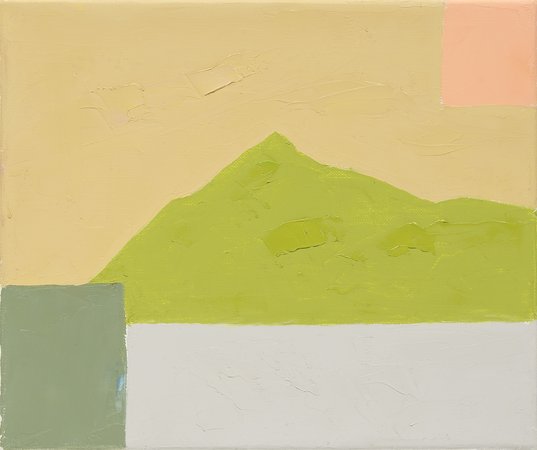 Untitled
, 2014. © Etel Adnan, courtesy Galerie Lelong
Untitled
, 2014. © Etel Adnan, courtesy Galerie Lelong
What connection, if any, do you draw between your paintings and poetry? What does the age-old form of the landscape painting—abstracted as your interpretation may be—have to say to viewers in the 21st century?
It is probably because I am a poet and writer too that I let my paintings express the positive side of me, which relates to my profound love for nature and the world. My writings are mainly political, related to the continuous tragedies that the Arab World, from which I come, has been experiencing. My writings are also sometimes philosophical since the very functioning of the mind can be a subject for meditation.
But with canvas, paper, and colors, I feel tuned into the physical world’s power and beauty. I love nature intensely, in both its grandiose aspects and intimacies: a rose, a tree, a stream of water can give me a sense of belonging to them, which I find blissful. I love oceans and mountains, and since I spent the greatest part of my life in coastal California, I'm attached to their extraordinary beauty. Landscape paintings will always exist because it will always be natural for artists to paint their environment in a way that exalts its infinite variety and appeal.
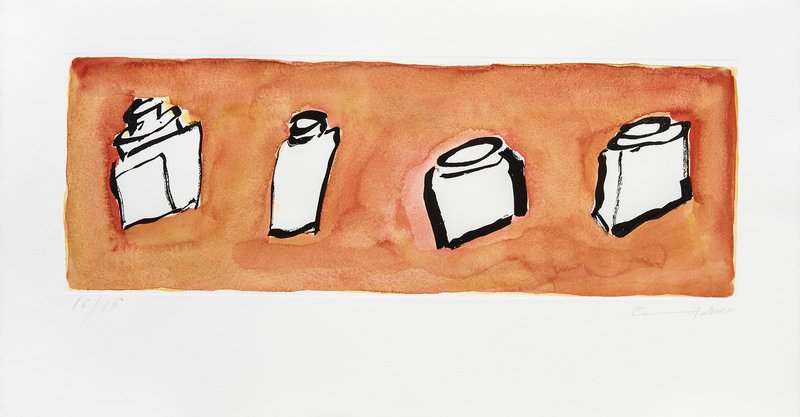 La Commedia dell'arte dei calamai IV
, 2015—available on Artspace
La Commedia dell'arte dei calamai IV
, 2015—available on Artspace
Painting and poetry are evidently two widely different art forms. Since poetry uses words, socially shared by many, writing seems to address great numbers of people in definitive ways. Poetry is a special use of language, so it is less widely reachable. Poetry creates an aura of mystery, escaping ordinary ideas and feelings.
Paintings might seem accessible because they are visible by almost everybody but in fact can be as hermetic and mysterious as poems. They can be harder to understand. Hundreds of thousands can see an art exhibition and very few really "get it." In my case, I started writing poetry long before I started painting, so something "poetic" pervades my canvases or drawings. I can't tell how, but I hope so.
 Untitled
, 1991. © Etel Adnan, courtesy Galerie Lelong
Untitled
, 1991. © Etel Adnan, courtesy Galerie Lelong
In your mind, what’s the best that a work of art can do? What’s the best that a work of art has done for you?
We often wonder what art can do for people. I would say that art humanizes society. It brings the reminder that we are more than physical bodies. We have a spirit that needs to be fed and stimulated, with fears that need appeasement. Poetry, visual art, music, sculpture, and so on keep elevating us and opening doors to more than ourselves. They can also serve as a sort of historical monument and give us a sense of past. A society with no art is a dead society—a prison. We can extend our present notion of art by examining how anything done with care can be viewed as the beginning of an artistic instinct at work. Gardening, cooking, and sewing are seen as crafts, but they harbor an artistic desire to go further, to discover, and to procure thoughts that transcend the merely functional.
Art does the same for me. When I look at a painting I like, I feel like I am present and in dialogue with a whole world that I would otherwise be unable to define. When I paint, I feel like I am part of something bigger than myself, in communication with all those who did more or less the same thing, and part of a community within ordinary society.
 Untitled
, c. 1970. © Etel Adnan, courtesy Galerie Lelong
Untitled
, c. 1970. © Etel Adnan, courtesy Galerie Lelong
You’ve repeatedly expressed the importance of public art in interviews, and even embarked on mural-making projects. What’s the potential for public art, in your mind? In our world of galleries and art fairs, how can paintings function as public and by extension political art works?
I have appreciated public art all my life. I see architecture as an art form. When I visit beautiful mosques or beautiful churches, I always feel dazzled and transported. I always think that they are a blessing for the less fortunate, who can live in poor conditions and yet still enjoy the grandeur and beauty of these fantastic structures. I love Greek churches, which serve as shelters for beauty. Their religious icons, which are often overlooked by conventional art historians, bring about an artistic experience equivalent to museums. Urbanism is also a sort of public art. Walking in ancient Italian cities feels like a present from the gods. The buildings create a feeling of well-being that is both an artistic experience and a public service. We're used to them, so we forget the miracle of beauty that they represent.
We should dream of having similarly effecting public works of art in our time. We can expect fountains in plazas, ceramic murals in the metro stations, hospital walls, school yards, banks, and so on. Yet, no one thinks of the need to humanize the harshness of our cities and suburbs.
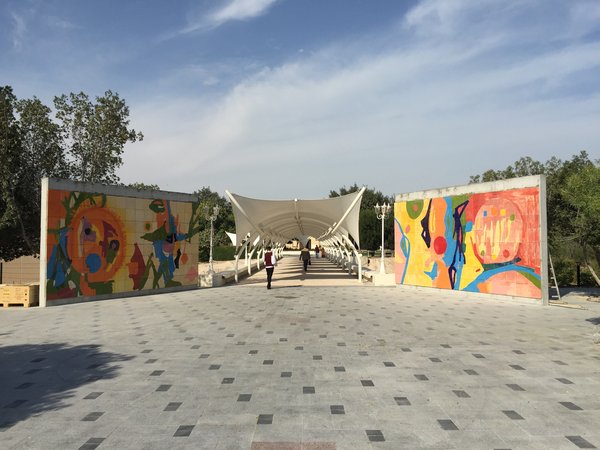
In 1930s America, the Works Progress Administration initiated by President Franklin D. Roosevelt was a wonderful response, on many fronts, to social problems of the time. I wish we could revive that spirit. Nowadays, graffiti and street art seem to attract the youth. It's not much, and it's not yet completely accepted as art, but it highlights the desire for public art. In troubled urban neighborhoods, we can find ways to improve situations partly by trying to find ways to humanize the environment and by calling for the participation in these efforts led by the younger generation. We can give the young people the materials needed to paint their own buildings, ask them to plant trees on their sidewalks, and so on. They will be less prone to destroy things that they themselves helped to build, and a softer environment can diminish their need for violence.
This is where art and politics mix and where they help each other. I believe in the redeeming value of art.
[related-works-module]











